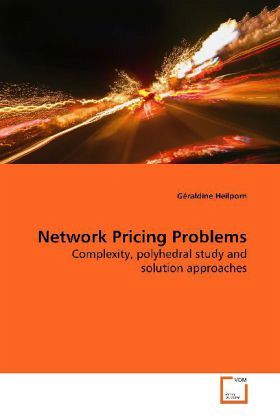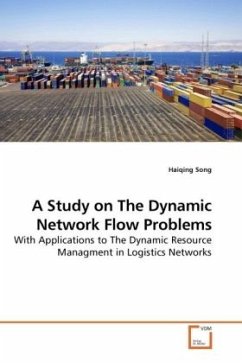
Network Pricing Problems
Complexity, polyhedral study and solution approaches
Versandkostenfrei!
Versandfertig in 6-10 Tagen
39,99 €
inkl. MwSt.

PAYBACK Punkte
20 °P sammeln!
Consider the problem of maximizing the revenuegenerated by tolls set on a subset of arcs of atransportation network, where origin-destinationflows (commodities) are assigned to shortest pathswith respect to the sum of tolls and initial costs.This work is concerned with a particular case of theabove problem, in which all toll arcs are connectedand constitute a path, as occurs on highways. As tolllevels are usually computed using the highwayentry-exit points, a complete toll subgraph isconsidered, where each toll arc corresponds to a tollsubpath. The problem is modelled as a linear mixedinteger ...
Consider the problem of maximizing the revenue
generated by tolls set on a subset of arcs of a
transportation network, where origin-destination
flows (commodities) are assigned to shortest paths
with respect to the sum of tolls and initial costs.
This work is concerned with a particular case of the
above problem, in which all toll arcs are connected
and constitute a path, as occurs on highways. As toll
levels are usually computed using the highway
entry-exit points, a complete toll subgraph is
considered, where each toll arc corresponds to a toll
subpath. The problem is modelled as a linear mixed
integer program, and proved to be NP-hard. Several
classes of valid inequalities are proposed, which
strengthen important constraints of the initial
model. Their efficiency is first shown theoretically,
as these are facet defining for the restricted one
and two commodity problems. Numerical tests also
highlight the practical efficiency of the valid
inequalities for the multi-commodity case. Finally,
we point out the links between this problem and a
more classical design and pricing problem in economics.
generated by tolls set on a subset of arcs of a
transportation network, where origin-destination
flows (commodities) are assigned to shortest paths
with respect to the sum of tolls and initial costs.
This work is concerned with a particular case of the
above problem, in which all toll arcs are connected
and constitute a path, as occurs on highways. As toll
levels are usually computed using the highway
entry-exit points, a complete toll subgraph is
considered, where each toll arc corresponds to a toll
subpath. The problem is modelled as a linear mixed
integer program, and proved to be NP-hard. Several
classes of valid inequalities are proposed, which
strengthen important constraints of the initial
model. Their efficiency is first shown theoretically,
as these are facet defining for the restricted one
and two commodity problems. Numerical tests also
highlight the practical efficiency of the valid
inequalities for the multi-commodity case. Finally,
we point out the links between this problem and a
more classical design and pricing problem in economics.












